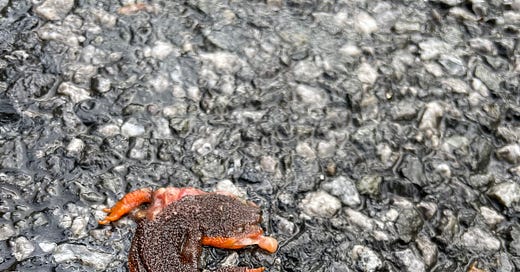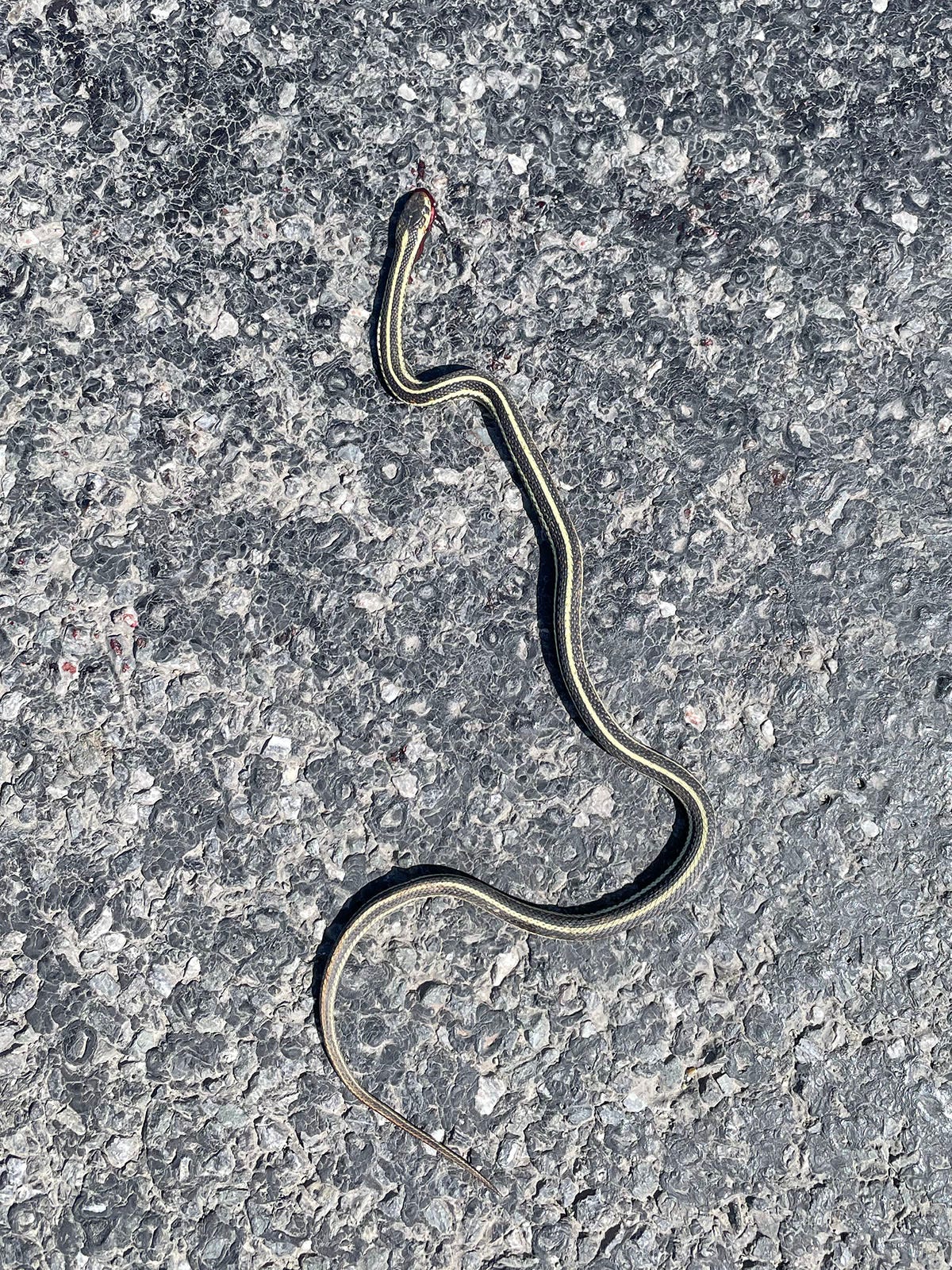I was riding my bicycle on a gorgeous spring day, admiring the blossoms adorning the hawthorne and apple trees, the catkins hanging long on the alders, the smell of flowers in the air, and loving the blue sky and the sun warm on my skin.
Coming up to an intersection, I noticed a garter snake crossing the road to my right. I planned to stop and move the snake to the side of the road, but had to wait for two cars to pass before I could turn onto the road where the snake was crossing.
After the cars passed, I saw the snake writhing on the ground, obviously in agony. I quickly rode up to see if—or how—he (or she) was hurt, and saw immediately that one or both of the cars had hit the snake in the head. He was still writhing, but his movement was slowing. I could only stand there and watch him die in front of me, feeling nauseous at the horror if it, the waste of it, and hoping the snake would die quickly. I didn’t want to pick him up and make his pain worse. Within a few seconds he was gone.
Suddenly, the spring day no longer was so fine.
I know from seeing countless dead animals on the road while on my walks and bicycle rides that this is a common occurrence. The animal I see most often flattened on the road is newts, usually squashed entirely flat, their innards splayed out around their dead bodies.
I take photos sometimes; I’m not sure why. To memorialize the dead, perhaps? I know that death is part of life, and yet it seems so senseless for these wild ones to be killed on the roads. Amphibians are among the most vulnerable animals to road mortality in the United States, especially during their seasonal migrations. One study in Indiana found that 95% of the roadkill along an 11-mile stretch of road were amphibians, primarily frogs and salamanders.
The number of animals killed on U.S. roads each year is staggering. We don’t have precise numbers, but estimates are that 365 million vertebrates—including mammals, birds, reptiles, and amphibians—and 32.5 trillion insects may be killed by vehicles annually.
The nation’s road system is a vast network of killing grounds stretching across the continent, paved in indifference. We build roads wider, faster, smoother for our convenience. We carve them through wetlands and forests, over prairies and deserts. And every living being that gets in the way is obliterated; smeared across the asphalt, crushed into fur and feathers and bone.
We don’t think of roads as corridors of death, as violence, but that’s only because we’ve normalized driving. It doesn’t matter what is under the hood of these machines—gas, diesel, or battery powered engines—they are all the same in their capacity to kill. How many dead animals do we pass without seeing? How many times do we hit someone and keep driving, the thud quickly forgotten; just another cost of doing business? But, the earth remembers. And every wild one who ever tried to cross remembers, in that final instant, what it means to be alive in a world ruled by machines.
This is what civilization does. It builds straight lines through wildness and calls it order. It breaks the bones of migration paths and calls it convenience. It makes war on the living and calls it infrastructure. We built speedways and shipping lanes, we built death into the foundation. And now, mile by mile, the world goes silent.





There’s pulse of anger every time I see an animal struck by a vehicle. Of course, I drive but I keep alert and keep my speed down purposely to avoid hitting animals. I can’t recall the last time I struck a vertebrate. And never have I killed or injured a large mammal. My guess is that with a major campaign to get people to slow down as a matter of practice we could cut the road slaughter at least in half. And what about driving during twilight hours or at night…I could go in and on. The truth is there are too many roads and highways built and being built to accommodate more and more people. We’re grossly overgrown and grossly disrespectful of other life as a civilization. Those two factors account for much of the mess we’ve made of our beloved Earth. The sooner we get people to understand this the better.
A beautiful rendering of the despair that lurks within many of us who believe in Rachel Carson’s words:
"Those who dwell among the beauties and mysteries of the earth are never alone or weary of life." When we see the destruction of the natural world because of the human decision to sacrifice beauty and mystery on the altar of convenience and “us first,” we grieve.